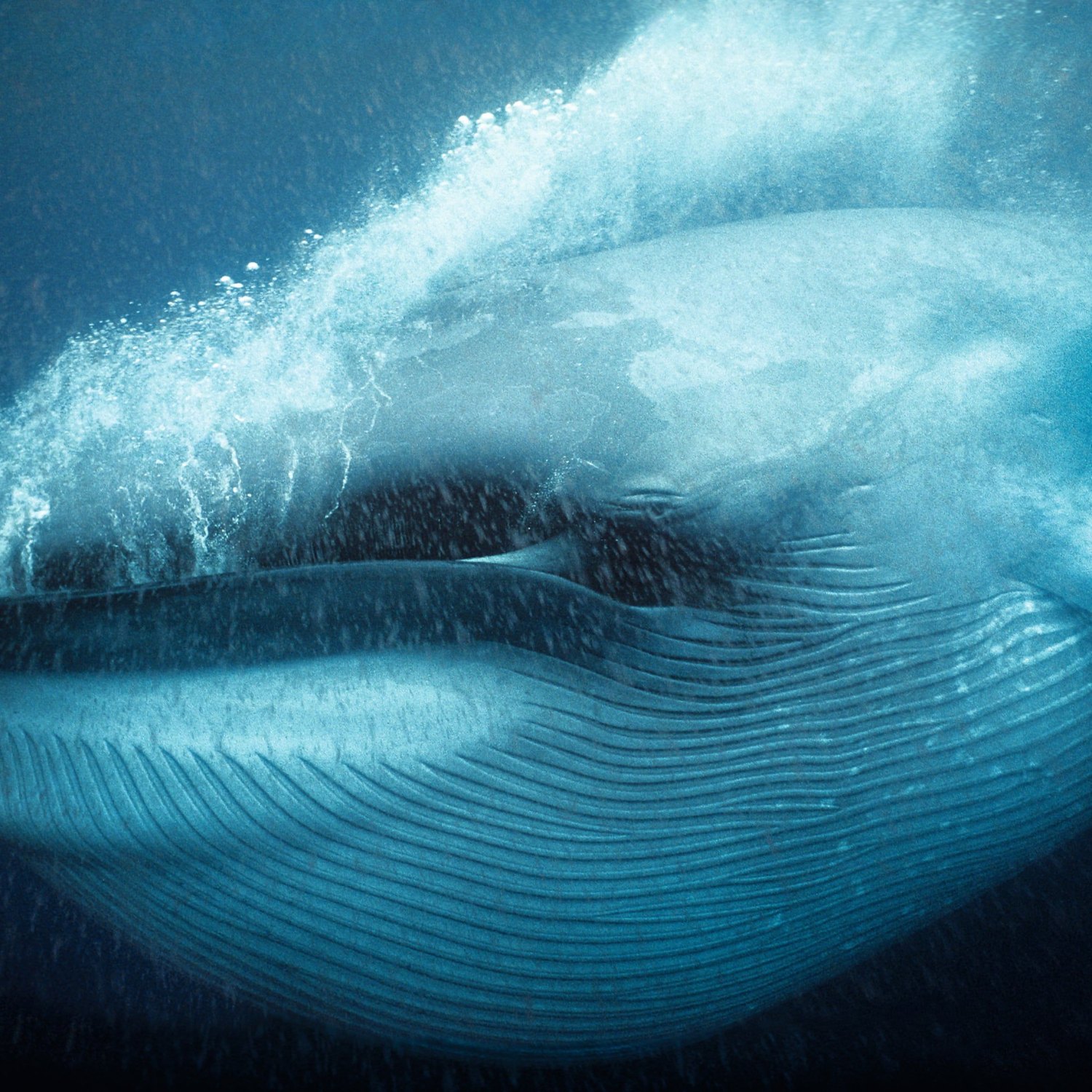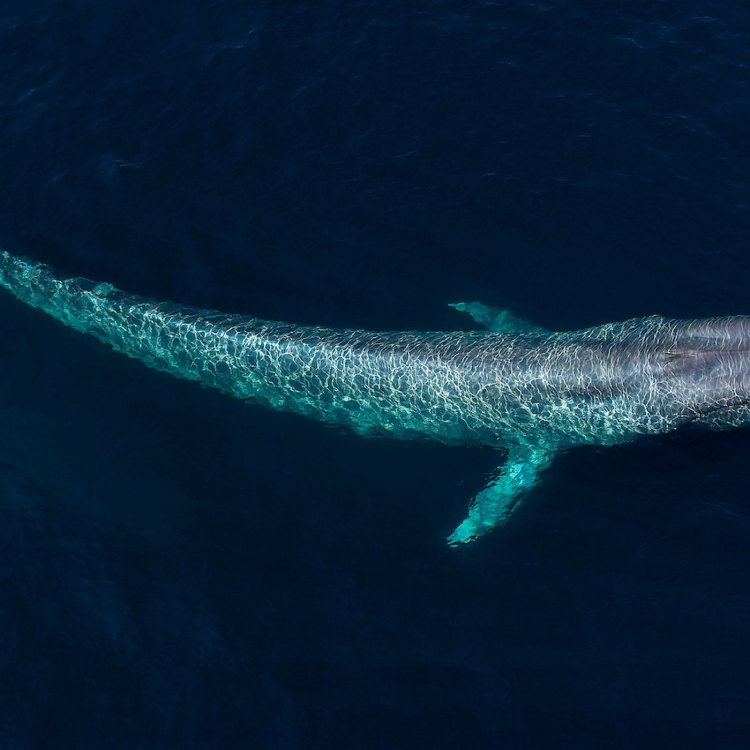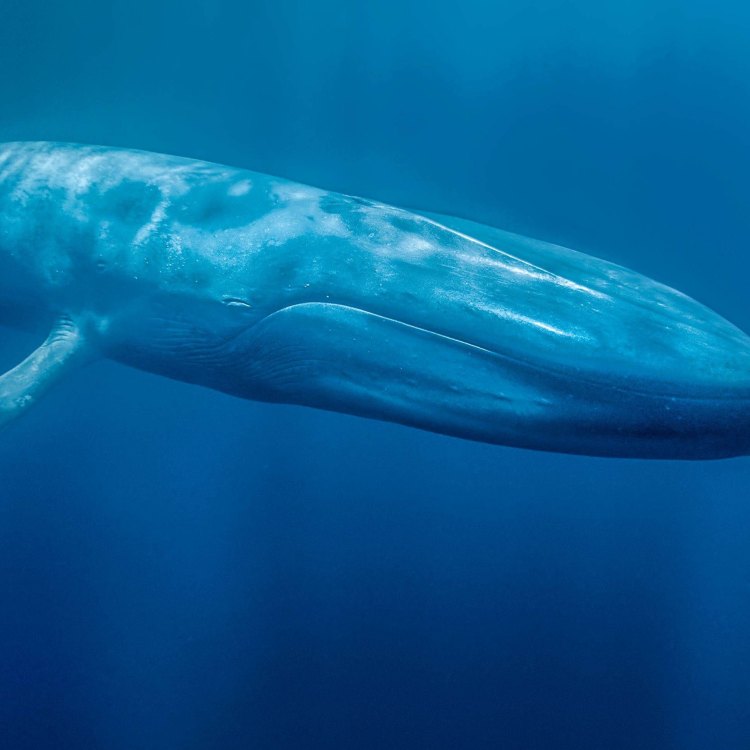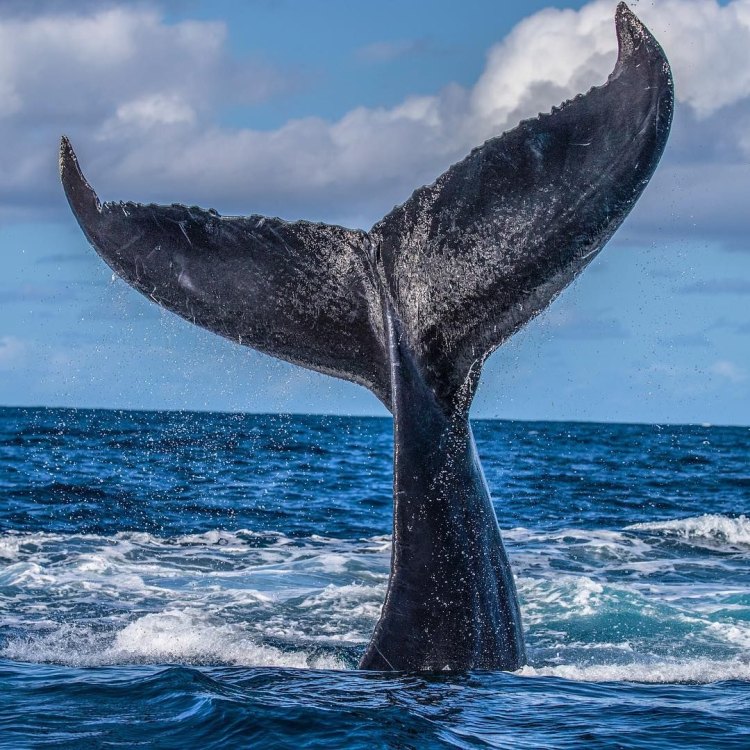
Blue Whale
Up to 30 meters
The graceful and majestic Blue Whale is the largest animal on Earth. With a body length of up to 30 meters, it can weigh over 200 tons. Found in the open ocean, these marine mammals belong to the Balaenopteridae family and have a streamlined body shape that allows them to swim at incredible speeds. Spotting a Blue Whale in its natural habitat is truly awe-inspiring. #BlueWhale #MarineLife
Animal Details Summary:
Common Name: Blue Whale
Kingdom: Animalia
Habitat: Open ocean
The Mighty Blue Whale: A Marvel of Nature's Diversity
The ocean is truly a magical place, filled with a diverse range of creatures that continue to captivate us. Among these amazing creatures is the Blue Whale, a magnificent mammal that inhabits the open waters of the world. With its scientific name, Balaenoptera musculus, the Blue Whale is the largest animal on the planet and a true wonder to behold.A Kingdom of its Own
The Blue Whale falls under the Kingdom of Animalia, which is the broadest classification level in the taxonomic hierarchy Blue Whale. It is here that all animals, including humans, are grouped together. As a member of the Animal Kingdom, the Blue Whale has many characteristics in common with other animals, such as the need to consume food to survive and the ability to reproduce.A Chordata Connection
Just like humans, the Blue Whale is also a member of the Phylum Chordata. This phylum includes all animals that have a notochord, a flexible rod-like structure that supports the body in the early stages of development. In the Blue Whale's case, the notochord eventually becomes the backbone, giving the animal its sturdy and streamlined body.The Class of Mammals
The Blue Whale belongs to the Class Mammalia, making it a mammal like other well-known animals such as gorillas, tigers, and dolphins. Mammals share common characteristics, including the presence of hair or fur on their bodies and the production of milk to feed their young. While the Blue Whale may not have much hair, it does produce milk to nourish its calves.The Order of Cetaceans
Cetaceans are marine animals that include whales, dolphins, and porpoises Black Pastel Ball Python. The Blue Whale belongs to the Order Cetacea, the cetaceans with the longest body. Interestingly, the word "cetacean" is derived from the Latin word "cetus," which means sea monster – a fitting description for the immense Blue Whale.A Family Affair
Within the Order Cetacea, the Blue Whale belongs to the Family Balaenopteridae, which includes other baleen whales such as the humpback and fin whale. These whales have a unique feeding method, which will be discussed later in this article. What makes the Blue Whale stand out in this family is its large size – it can even outweigh the other baleen whales by three times their mass.A Diverse Habitat
The Blue Whale's preferred habitat is the open ocean, and it can be found in all of the world's oceans, from the Arctic and Antarctic to the equator. While it may have a wide geographical distribution, it tends to migrate to areas where food is abundant. This can include polar regions during the summer months when food is more plentiful.A Filter Feeder's Diet
The Blue Whale is a filter feeder, which means it consumes tiny, planktonic organisms, including krill and small fish, by straining them through baleen plates in its mouth. To give you a sense of their diet, an adult Blue Whale can consume up to 40 million krill in a single day! This feeding method allows them to consume large amounts of food while expending minimal energy.Around the World in a Lifetime
As previously mentioned, the Blue Whale's habitat and feeding habits influence its migration patterns. While some populations tend to stay in the same waters year-round, others can travel long distances throughout their lifetime. Some Blue Whales have been known to make a round trip of 10,000 miles, making it one of the farthest migratory journeys of any mammal.Celebrating Worldwide Diversity
While the Blue Whale may not have a specific country of origin, it is a beloved and important species worldwide. In fact, it is officially recognized as the national marine mammal of Sri Lanka. Many coastal communities also rely on the Blue Whale for ecotourism, attracting visitors from all over the world and generating valuable income.The Color of the Ocean's Depths
One of the Blue Whale's most distinctive features is its physical appearance, specifically its coloration. As the name suggests, the Blue Whale has a gray-blue body coloration, which blends in perfectly with the ocean's depths. This coloration is not only for camouflage but also serves as protection from the harmful rays of the sun.A Streamlined Body for Speed
In addition to its coloration, the Blue Whale's body shape is also adapted to its open ocean habitat. Its body is streamlined and tapered at both ends, allowing it to move quickly through the water. This design is essential for hunting and avoiding predators, as well as conserving energy during long-distance migrations.A Size That's Out of this World
As the largest animal on the planet, the exact size of the Blue Whale is a matter of awe and wonder. On average, a fully grown Blue Whale can reach lengths of up to 30 meters – that's almost the length of a football field! Its tongue alone can weigh as much as an elephant, and it has a heart the size of a small car.Size Isn't Everything
While it's easy to be amazed by the Blue Whale's immense size, it's also important to recognize the value of its contributions to the ocean's ecosystem. The Blue Whale plays a crucial role in the ocean's food chain, consuming vast amounts of tiny organisms that would otherwise reproduce uncontrollably and disrupt the balance of the marine environment.Conservation Efforts for the Blue Whale
Despite its colossal size, the Blue Whale is still vulnerable to threats such as pollution, climate change, and human activities like commercial whaling. In the past, these factors have resulted in a significant decline in their population. However, thanks to efforts made by various organizations and countries to protect and conserve the species, the Blue Whale population has started to recover.A Beacon of Hope
The Blue Whale's resilience and ability to adapt to changing environments is a testament to its strength and importance in this world. As we continue to learn more about these incredible creatures, it is clear that they are a symbol of hope and resilience for all species, reminding us of the importance of preserving biodiversity and the beauty of nature.In Conclusion
The Blue Whale is a true marvel of nature, with its massive size, diverse habitat, and unique adaptations. As the largest animal on the planet, it is an important species that continues to fascinate and mesmerize us. From its feeding methods to its migratory patterns, the Blue Whale is an excellent example of how an animal can play a crucial role in maintaining the balance of our planet's ecosystems. Let us continue to appreciate and protect this magnificent creature for generations to come.

Blue Whale
Animal Details Blue Whale - Scientific Name: Balaenoptera musculus
- Category: Animals B
- Scientific Name: Balaenoptera musculus
- Common Name: Blue Whale
- Kingdom: Animalia
- Phylum: Chordata
- Class: Mammalia
- Order: Cetacea
- Family: Balaenopteridae
- Habitat: Open ocean
- Feeding Method: Filter feeder
- Geographical Distribution: Worldwide
- Country of Origin: N/A
- Location: Open ocean
- Animal Coloration: Gray-blue
- Body Shape: Streamlined
- Length: Up to 30 meters

Blue Whale
- Adult Size: Largest animal on Earth
- Average Lifespan: About 70 - 90 years
- Reproduction: Sexual
- Reproductive Behavior: Mating occurs in warm tropical waters
- Sound or Call: Produces a series of low-frequency calls
- Migration Pattern: Long-distance migrations
- Social Groups: Solitary or in small groups
- Behavior: Gentle and slow-moving
- Threats: Whaling, habitat degradation, climate change, ship strikes
- Conservation Status: Endangered
- Impact on Ecosystem: Important role as a top predator and nutrient recycler
- Human Use: Historically hunted for their blubber and oil, now protected by international laws
- Distinctive Features: Massive size, long and slender body, mottled gray-blue coloration
- Interesting Facts: Blue whales are the largest animals known to have ever existed
- Predator: No natural predators

Balaenoptera musculus
The Mighty Blue Whale: A Gentle Giant of the Sea
In the vast expanse of the world's oceans, there is one creature that stands out among the rest in both size and beauty. The blue whale, also known scientifically as Balaenoptera musculus, is not only the largest animal on Earth, but also one of the most intriguing and fascinating creatures to ever exist. With an average lifespan of 70 to 90 years, and a gentle and slow-moving demeanor, the blue whale is truly a remarkable species that has captured the awe and curiosity of humans for centuries.As its name suggests, the blue whale is predominantly blue-gray in color, with a mottled appearance caused by the presence of algae and microorganisms on its skin PeaceOfAnimals.Com. This elegant creature can reach lengths of up to 100 feet and weigh up to 200 tons, making it larger than any known dinosaur that ever roamed the Earth. However, despite its massive size, the blue whale's diet mainly consists of tiny shrimp-like creatures called krill, which it filters through baleen plates in its mouth.
Blue whales are found in all of the world's major oceans, but are most commonly observed in the Southern Hemisphere. They are known for their long-distance migrations, traveling thousands of miles between feeding and breeding grounds every year. Mating occurs in warm tropical waters, where the males compete for the attention of females by producing a series of low-frequency calls that can be heard for many miles underwater. These calls, although still poorly understood, are thought to play a vital role in the blue whale's reproductive behavior.
Despite their gentle nature and integral role in the marine ecosystem, the blue whale population has faced numerous threats throughout history. The most significant of these threats is whaling, which has resulted in a drastic decline in their numbers. In the early 20th century, blue whale populations were hunted to near extinction for their blubber and oil, which were used in a variety of products including cosmetics and candles Bumblebee. However, with the implementation of international laws protecting these magnificent creatures, their numbers have slowly started to recover.
Unfortunately, the blue whale is still facing multiple threats, including habitat degradation, climate change, and ship strikes. These threats have added to the pressure on the already endangered species, highlighting the importance of conservation efforts for their survival. Governments, organizations, and individuals around the world are working tirelessly to ensure the protection and preservation of these gentle giants.
Aside from their impact on the marine ecosystem, blue whales also hold significant historical and cultural value. For centuries, they have been the subject of ancient myths and legends, and their majestic presence has been depicted in art and literature. In the past, they were also highly sought after by humans for their valuable resources. However, with a better understanding of their importance in the ecosystem, these mighty creatures are now celebrated and protected by many.
One of the most remarkable features of the blue whale is its remarkable adaptations for survival in the harsh marine environment. Their massive size, coupled with a layer of blubber up to a foot thick, allows them to withstand the frigid temperatures of the open ocean. Their long and slender body, known as a fusiform shape, also helps reduce drag and enables them to swim at speeds of up to 30 miles per hour.
As the largest animals known to have ever existed, blue whales have a significant impact on the marine ecosystem. They play a vital role as top predators, helping to maintain a balance in the food chain. They also assist in nutrient recycling, as their feces contain vital nutrients that support the growth of phytoplankton, which in turn provides sustenance for the entire marine food web.
The blue whale's size and slow-moving nature have also resulted in it having no natural predators in the wild. However, humans continue to pose the most significant threat to their survival. This has led to the implementation of various conservation efforts to protect and preserve this iconic species. Measures such as implementing marine protected areas, reducing human impact on their habitat, and promoting sustainable practices, all play a vital role in securing a future for these majestic creatures.
In conclusion, the blue whale is a true marvel of nature, with its massive size, gentle demeanor, and critical role in the marine ecosystem. It continues to capture the hearts and minds of people all over the world, and its survival is crucial for the balance of the oceans. As we continue to learn more about these magnificent creatures, it is our responsibility to protect and preserve them for future generations to admire and appreciate. The mighty blue whale truly is a gentle giant of the sea, and we must do all we can to ensure its continued existence on this planet.

The Mighty Blue Whale: A Marvel of Nature's Diversity
Disclaimer: The content provided is for informational purposes only. We cannot guarantee the accuracy of the information on this page 100%. All information provided here may change without prior notice.












